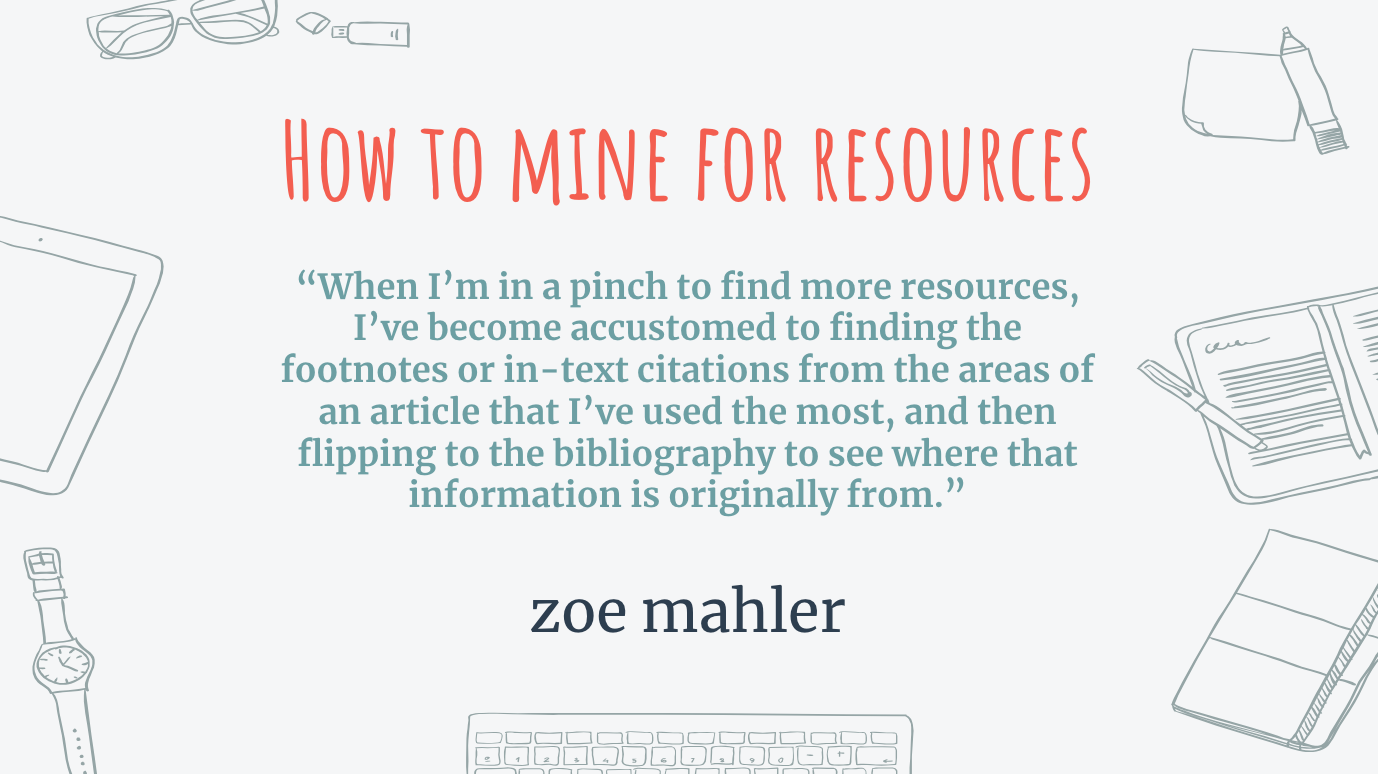How to mine for resources
by Zoë Mahler
It’s Week 3, which means all our first papers are starting to pop up. The first step of every great paper is knowing you have the resources to back up your claims. But the first step may also be the most difficult one as well.
Finding good information from reputable sources can be tricky. We’ve all been in a situation where we find that one really good source. It’s easy to think, “This is really all I need.”
Well … not quite.
There’s been a pattern for me: Each paper I write is usually going to need at least five or so sources. But what do you do when you find that One Great Source and don’t want to look anywhere else? Bibliography mining might be your best bet.
Something I often forget when reading through the articles and books I’ve found is that the information I’m finding has already been compiled from multiple sources. At the end of every scholarly source – article, book, book review – you’ll find the bibliography of sources from which the author of your source already did his/her research.
So why not just take a peek there?
When I’m in a pinch to find more resources, I’ve become accustomed to finding the footnotes or in-text citations from the areas of an article that I’ve used the most, and then flipping to the bibliography to see where that information is originally from. Within that bibliography, it’s much easier for me to narrow down what articles and books I can use to continue to acquire the number of sources needed for each paper.
It’s only Week 3, so hopefully, with these tips and tricks on how to find reputable resources with the information you’re looking for, you can use this method of bibliography mining to ace the rest of your papers through the rest of the spring semester. Happy mining!
Zoë Mahler is a senior with a double major in art history and mass communication and minors in religion and sociology. This past summer she traveled abroad in the Wales and Malta program studying archaeology.

